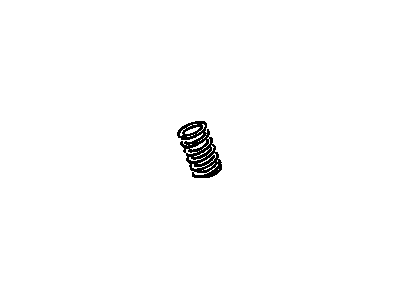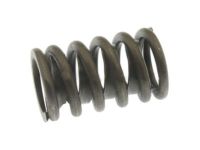
My Garage
My Account
Cart
Genuine Chevrolet Astro Rocker Shaft Spring Kit
Rocker Shaft Spring Set- Select Vehicle by Model
- Select Vehicle by VIN
Select Vehicle by Model
orMake
Model
Year
Select Vehicle by VIN
For the most accurate results, select vehicle by your VIN (Vehicle Identification Number).
6 Rocker Shaft Spring Kits found
Chevrolet Astro Spring, Valve (W/ Dampener)
Part Number: 3911068$8.89 MSRP: $14.18You Save: $5.29 (38%)Ships in 1-3 Business DaysChevrolet Astro Spring,Valve
Part Number: 10212811$12.79 MSRP: $20.41You Save: $7.62 (38%)Ships in 1-2 Business DaysChevrolet Astro Spring Assembly, Vlv
Part Number: 94666580$8.89 MSRP: $14.18You Save: $5.29 (38%)Ships in 1-3 Business Days
Chevrolet Astro Rocker Shaft Spring Kit
Each OEM Chevrolet Astro Rocker Shaft Spring Kit we offer is competitively priced and comes with the assurance of the manufacturer's warranty for the part. Furthermore, we guarantee the speedy delivery of your orders right to your doorstep. Our hassle-free return policy is also in place for your peace of mind.
Chevrolet Astro Rocker Shaft Spring Kit Parts Questions & Experts Answers
- Q: How can broken Rocker Shaft Spring Kit and Valve Stem Oil Seal be replaced without removing the cylinder head in four cylinder engine on Chevrolet Astro?A:Valve springs can be visually inspected for tension and broken valve stems with seals can be serviced without removal of the cylinder head usually requiring a technician and two specialized tools and compressed air. In emergency when compressed air is not available, a nylon rope can be used so as to stop the valves from falling into the cylinder. To be started by using the removal of Rocker Arm cover and the spark plug from the cylinder in consideration, or all spark plugs if all the valve stem seals will be replaced. Make the piston at the top dead center of the compression strokes while making the necessary adjustment on the valves, and the adjustment can be done one cylinder after another starting at the firing order sequence. Slip an adapter into the spark plug hole and attach an air hose to a can of compressed air. Take out the bolt, pivot ball and the rocker arm for the bad valve and pull out the Pushrod. Use compressed air to retain the valve; if there is leakage, another way is to sit the piston at a little before TDC and then put nice nylon rope in the combustion chamber. The parts next need to be protected from falling into the engine, which can be done by using shop rags, then you use a valve spring compressor to remove the keepers and compress the valve spring. Remove the valve stem O-ring seal and the spring retainer shield and examine the valve spring if it is damaged or not. It is wise to cover the valve stem with a rubber band or tape so that it does not fall, and let out the air pressure. Check the valve stem for signs of wear and tear and make sure the same spins freely in the guide. Reapply air pressure to hold the valve in place, oil the valve stem with the engine oil, and in case replace the umbrella type guide seal if at all needed. Mount the spring over the valve and the shield and fit the retainer of the valve spring into its seat to accommodate the new and finer O-ring seal. Place the keepers in the upper groove and use grease for the same if the groove is not able to hold the keepers in place. Pull off all the pressure from the spring tool, detach the hose from the air and take off the adapter from the spark plug hole. Put in the rocker arm(s) and the pushrod(s) and the spark plug(s) together with the wire and put back the rocker arm cover. Take the handles and start the engine checking the area of the rocker arm cover for any signs of oil leakage or any unusual sounds.
Related Chevrolet Astro Parts
Browse by Year
2005 Rocker Shaft Spring Kit 2004 Rocker Shaft Spring Kit 2003 Rocker Shaft Spring Kit 2002 Rocker Shaft Spring Kit 2001 Rocker Shaft Spring Kit 2000 Rocker Shaft Spring Kit 1999 Rocker Shaft Spring Kit 1998 Rocker Shaft Spring Kit 1997 Rocker Shaft Spring Kit 1996 Rocker Shaft Spring Kit 1995 Rocker Shaft Spring Kit 1994 Rocker Shaft Spring Kit 1993 Rocker Shaft Spring Kit 1992 Rocker Shaft Spring Kit 1991 Rocker Shaft Spring Kit 1990 Rocker Shaft Spring Kit 1989 Rocker Shaft Spring Kit 1988 Rocker Shaft Spring Kit 1987 Rocker Shaft Spring Kit 1986 Rocker Shaft Spring Kit 1985 Rocker Shaft Spring Kit











